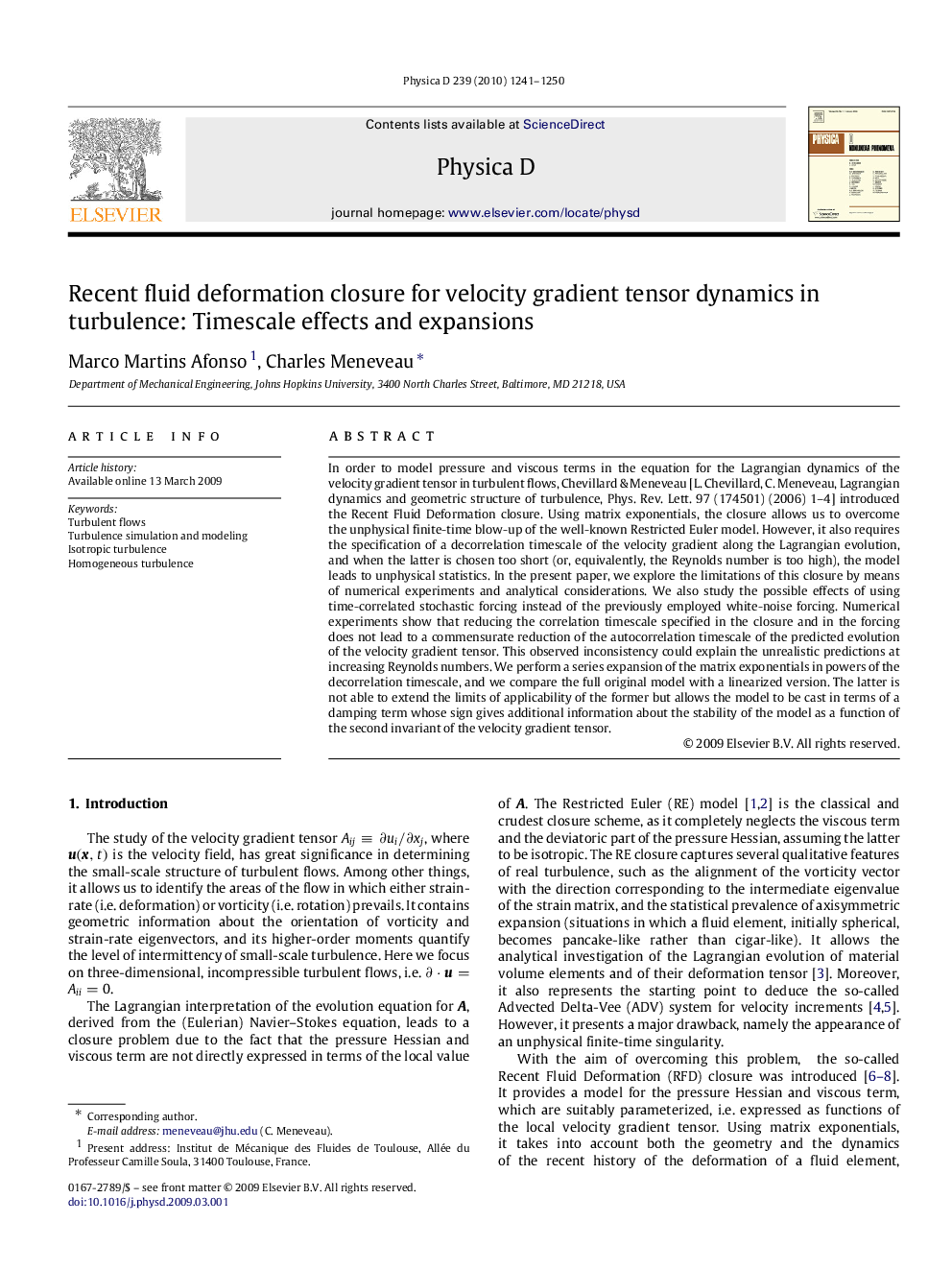| Article ID | Journal | Published Year | Pages | File Type |
|---|---|---|---|---|
| 1896494 | Physica D: Nonlinear Phenomena | 2010 | 10 Pages |
Abstract
In order to model pressure and viscous terms in the equation for the Lagrangian dynamics of the velocity gradient tensor in turbulent flows, Chevillard & Meneveau [L. Chevillard, C. Meneveau, Lagrangian dynamics and geometric structure of turbulence, Phys. Rev. Lett. 97 (174501) (2006) 1-4] introduced the Recent Fluid Deformation closure. Using matrix exponentials, the closure allows us to overcome the unphysical finite-time blow-up of the well-known Restricted Euler model. However, it also requires the specification of a decorrelation timescale of the velocity gradient along the Lagrangian evolution, and when the latter is chosen too short (or, equivalently, the Reynolds number is too high), the model leads to unphysical statistics. In the present paper, we explore the limitations of this closure by means of numerical experiments and analytical considerations. We also study the possible effects of using time-correlated stochastic forcing instead of the previously employed white-noise forcing. Numerical experiments show that reducing the correlation timescale specified in the closure and in the forcing does not lead to a commensurate reduction of the autocorrelation timescale of the predicted evolution of the velocity gradient tensor. This observed inconsistency could explain the unrealistic predictions at increasing Reynolds numbers. We perform a series expansion of the matrix exponentials in powers of the decorrelation timescale, and we compare the full original model with a linearized version. The latter is not able to extend the limits of applicability of the former but allows the model to be cast in terms of a damping term whose sign gives additional information about the stability of the model as a function of the second invariant of the velocity gradient tensor.
Keywords
Related Topics
Physical Sciences and Engineering
Mathematics
Applied Mathematics
Authors
Marco Martins Afonso, Charles Meneveau,
